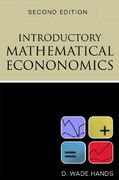Question
Production and Cost: In Spring 2020 the COVID-19 pandemic caused production disruptions across the economy. a. Many workers who formerly worked in central locations, such
Production and Cost: In Spring 2020 the COVID-19 pandemic caused production disruptions across the economy.
a. Many workers who formerly worked in central locations, such as office buildings, switched to working remotely. In April 2020, Gallup found a jaw-dropping 51% of workers reported they were "always" working remotely. Consider workers who previously did not work remotely and were forced into creating workspaces in their homes. Name three fixed and three variable costs associated with working from home.
Explain why you categorized each
b. Household production is also an important economic activity. Services such as cleaning, cooking, childcare and maintenance are common household services. Since the pandemic began, for those with school age children, additional services such as childcare, schooling, and other services previously procured from outside the household are now being produced inside the household.
i. What is the main input in producing these additional services?
ii. Consider two families. One has one child of school age and the other has three.
Compare the household production process between these two families. Which is likely to produce more of these outputs? Which is likely to produce more per unit of time? Why? (You may assume any number of adults in the household and any work habits of those adults you wish. When answering the question make the same assumptions for both households.)
c. Many high touch businesses, such as restaurants and bars, have been hit particularly hard due to shut-down orders and limitations on the number of patrons allowed on the premise. Just in the Chicago area alone it was reported that by September 2020 fifty restaurants permanently shut down due to the COVID-19 response. Despite this massive dislocation, it could have been worse. Some estimates produced in the early part of the summer projected that by Fall 2020 as many as eighty-five percent of restaurants in Illinois would close permanently due to the state's COVID-19 policy. Yet many restaurants continue to operate despite the inability to maximize their revenues because of the COVID-19 restrictions. Explain why some restaurants would close permanently while others, despite losing money, can continue to operate.
Step by Step Solution
There are 3 Steps involved in it
Step: 1

Get Instant Access to Expert-Tailored Solutions
See step-by-step solutions with expert insights and AI powered tools for academic success
Step: 2

Step: 3

Ace Your Homework with AI
Get the answers you need in no time with our AI-driven, step-by-step assistance
Get Started


